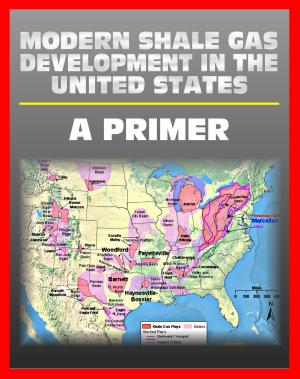Project 1704: U.S. Army War College Analysis of Russian Strategy in Eastern Europe, Appropriate U.S. Response, and Implications for U.S. Landpower - Putin's Rise to Power, Military, Ukraine Crisis
Nonfiction, History, Military, Strategy, Asian, Russia| Author: | Progressive Management | ISBN: | 9781310536458 |
| Publisher: | Progressive Management | Publication: | November 19, 2015 |
| Imprint: | Smashwords Edition | Language: | English |
| Author: | Progressive Management |
| ISBN: | 9781310536458 |
| Publisher: | Progressive Management |
| Publication: | November 19, 2015 |
| Imprint: | Smashwords Edition |
| Language: | English |
Professionally converted for accurate flowing-text e-book format reproduction, this report by the U.S. Army carefully examines the threat posed by the aggressive Russian strategy in Europe pursued by President Vladimir Putin.
In the summer of 2014, Russia forcibly annexed Crimea from Ukraine and then actively supported ethnic Russian separatists in an on-going irredentist bid in Eastern Ukraine. This aggressive policy threatens to challenge NATO and the United States in its support of Ukraine and other nations of Eastern Europe. From this changing strategic environment, three central questions emerge: (1) What is the Russian strategy in their periphery? (2) What is the appropriate U.S. response? (3) What are the implications for U.S. landpower?
Vladimir Putin's grand strategy relies on a complex mix of diplomatic, informational, military, and economic factors to preserve and expand Russian global power. Putin's strategy hinges on maintaining internal legitimacy, advancing a narrative of Russian greatness, manipulating nationalism, and protecting sources of revenue. He seizes opportunities to improve his position by controlling the media and the wealth of the elite class. Additionally, he maintains government control of large sectors of the Russian economy and industry, while engaging in energy politics abroad to advance its national interests. Finally, Putin is determined to keep former Soviet bloc countries oriented politically and economically toward Russia. In this, he espouses distinctly anti-Western rhetoric, casting NATO and the United States as Russian adversaries.
Chapter 1: The Russian Strategic Environment * I. Historical Introduction * Russia yesterday * Russia today * Russia in crisis * II. Putin's Rise to Power * Out of nowhere * Putin's Russia * Establishing his rule * The man and his method * III. The Russian Military * Disarray * Ivanov doctrine * Continued reforms * Reforms since 2008 * Concerns * IV. The Russian Economy and Energy Sector * A weak ruble * Energy dependency * Impact of Ukraine crisis * Concerns * V. The Russian System * Trends * Tensions, frictions, and fissures * End state * VI. Conclusion * Chapter 2: Russian Landpower * I. Introduction * II. Recent Russian Military Operations * The 2008 Russia-Georgia Conflict * Russia's Lessons Learned * Georgia's Lessons Learned * III. The 2014-2015 Russian-Ukrainian Conflict * Russian Operations in Crimea * Russian Operations in Eastern Ukraine * IV. Recent Russian Military Operations: Similarities and Differences * Russian Landpower Today: State of Modernization and Readiness * Doctrine * Organization * Training * Materiel * Leadership * Personnel * V. Conclusion * Chapter 3 - The Emerging Russian approach * I. Strategy of Ambiguity * NATO/EU Divisions * Strategic Center of Gravity * Critical Capabilities * Critical Requirements * Flashpoints * Protection of Ethnic Russians Abroad * Western Alignment of a State * II. Anatomy of the Russian Response * The Russian Operational Approach * Objectives * Mechanisms * Desired Conditions * Lines of Operations and Examples * III. Assessment of Russian Strategy * IV. Conclusion * Chapter 4: Analysis and Recommendations * I. Introduction * II. Ends * Strategic Approach of the United States and NATO * III. Ways * Countering the Russian Approach to the Baltic States (Estonia, Latvia, Lithuania) * Countering the Russian Approach to Georgia and Ukraine * Countering the Russian Approach to Other Potential Russian Targets (Moldova and the Arctic) * IV. Putting the Army Operating Concept into Action * Where the Army Operating Concept Fits Well Where the Army Operating Concept Fits Well * Where the Army Operating Concept Falls Short * Tenets of Army Operations and the Current Force Structure in Europe * The Army Operating Concept: Risk and Mitigation * V. Means * Baltic States (Estonia, Latvia, Lithuania) * Georgia and Ukraine * Other Potential Russian Targets (Moldova and the Arctic) * Recommended Role for NATO
Professionally converted for accurate flowing-text e-book format reproduction, this report by the U.S. Army carefully examines the threat posed by the aggressive Russian strategy in Europe pursued by President Vladimir Putin.
In the summer of 2014, Russia forcibly annexed Crimea from Ukraine and then actively supported ethnic Russian separatists in an on-going irredentist bid in Eastern Ukraine. This aggressive policy threatens to challenge NATO and the United States in its support of Ukraine and other nations of Eastern Europe. From this changing strategic environment, three central questions emerge: (1) What is the Russian strategy in their periphery? (2) What is the appropriate U.S. response? (3) What are the implications for U.S. landpower?
Vladimir Putin's grand strategy relies on a complex mix of diplomatic, informational, military, and economic factors to preserve and expand Russian global power. Putin's strategy hinges on maintaining internal legitimacy, advancing a narrative of Russian greatness, manipulating nationalism, and protecting sources of revenue. He seizes opportunities to improve his position by controlling the media and the wealth of the elite class. Additionally, he maintains government control of large sectors of the Russian economy and industry, while engaging in energy politics abroad to advance its national interests. Finally, Putin is determined to keep former Soviet bloc countries oriented politically and economically toward Russia. In this, he espouses distinctly anti-Western rhetoric, casting NATO and the United States as Russian adversaries.
Chapter 1: The Russian Strategic Environment * I. Historical Introduction * Russia yesterday * Russia today * Russia in crisis * II. Putin's Rise to Power * Out of nowhere * Putin's Russia * Establishing his rule * The man and his method * III. The Russian Military * Disarray * Ivanov doctrine * Continued reforms * Reforms since 2008 * Concerns * IV. The Russian Economy and Energy Sector * A weak ruble * Energy dependency * Impact of Ukraine crisis * Concerns * V. The Russian System * Trends * Tensions, frictions, and fissures * End state * VI. Conclusion * Chapter 2: Russian Landpower * I. Introduction * II. Recent Russian Military Operations * The 2008 Russia-Georgia Conflict * Russia's Lessons Learned * Georgia's Lessons Learned * III. The 2014-2015 Russian-Ukrainian Conflict * Russian Operations in Crimea * Russian Operations in Eastern Ukraine * IV. Recent Russian Military Operations: Similarities and Differences * Russian Landpower Today: State of Modernization and Readiness * Doctrine * Organization * Training * Materiel * Leadership * Personnel * V. Conclusion * Chapter 3 - The Emerging Russian approach * I. Strategy of Ambiguity * NATO/EU Divisions * Strategic Center of Gravity * Critical Capabilities * Critical Requirements * Flashpoints * Protection of Ethnic Russians Abroad * Western Alignment of a State * II. Anatomy of the Russian Response * The Russian Operational Approach * Objectives * Mechanisms * Desired Conditions * Lines of Operations and Examples * III. Assessment of Russian Strategy * IV. Conclusion * Chapter 4: Analysis and Recommendations * I. Introduction * II. Ends * Strategic Approach of the United States and NATO * III. Ways * Countering the Russian Approach to the Baltic States (Estonia, Latvia, Lithuania) * Countering the Russian Approach to Georgia and Ukraine * Countering the Russian Approach to Other Potential Russian Targets (Moldova and the Arctic) * IV. Putting the Army Operating Concept into Action * Where the Army Operating Concept Fits Well Where the Army Operating Concept Fits Well * Where the Army Operating Concept Falls Short * Tenets of Army Operations and the Current Force Structure in Europe * The Army Operating Concept: Risk and Mitigation * V. Means * Baltic States (Estonia, Latvia, Lithuania) * Georgia and Ukraine * Other Potential Russian Targets (Moldova and the Arctic) * Recommended Role for NATO















